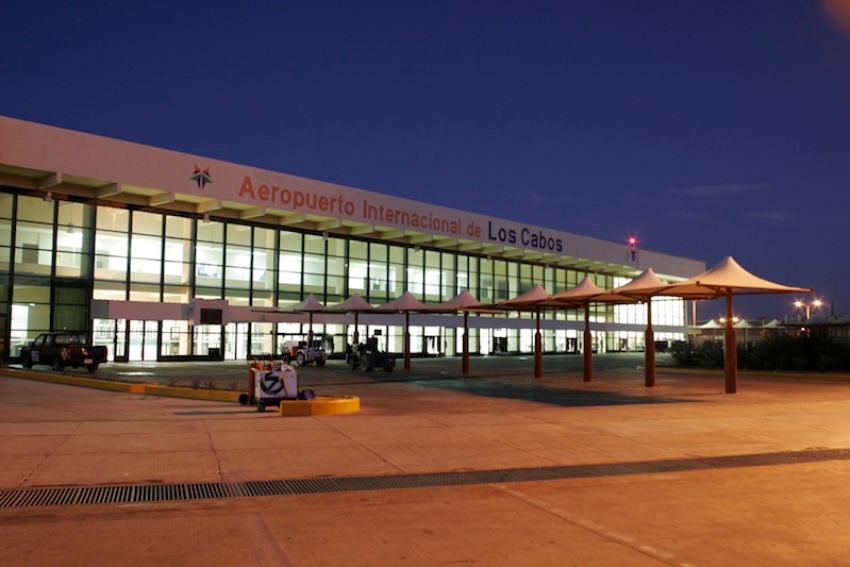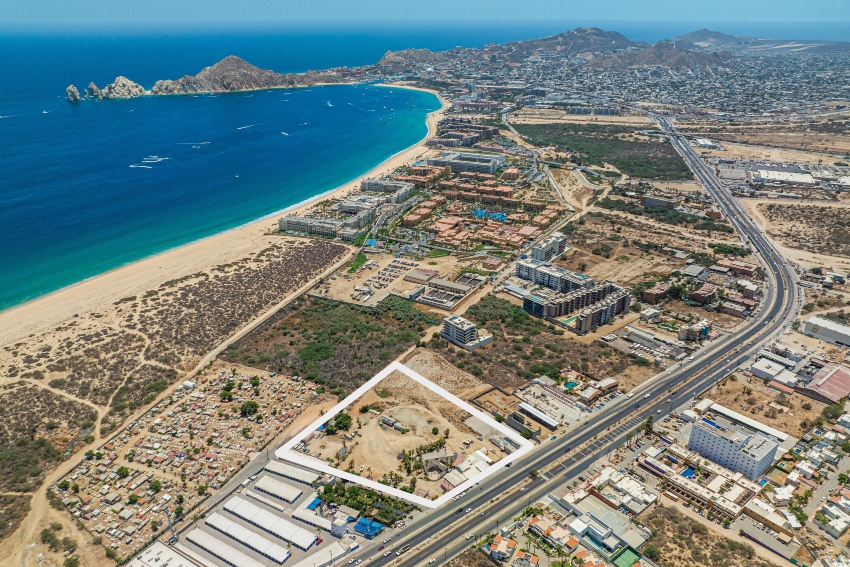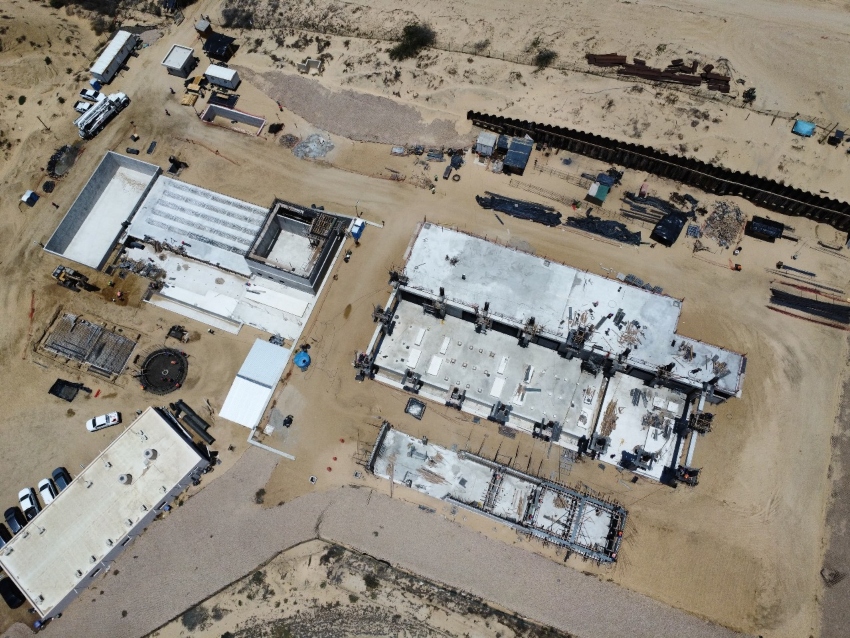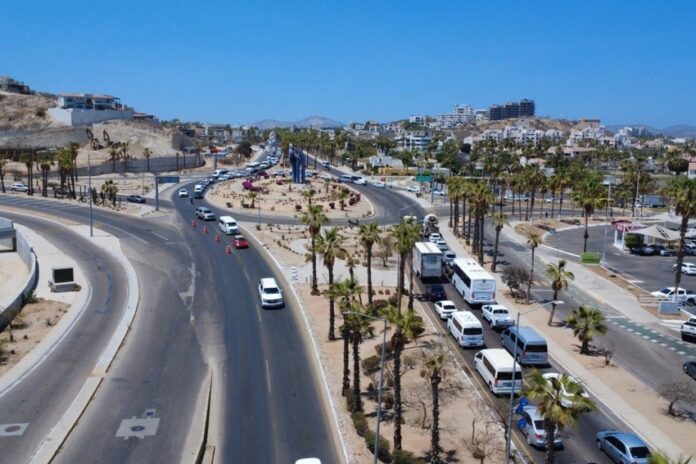As Los Cabos’ growth continues, both in terms of a rapidly increasing population and an increasing number of annual tourists, the destination is struggling to keep pace with infrastructure improvements to handle the influx. The Fonatur roundabout project, for example, is an ambitious undertaking that should significantly alleviate traffic in one of the municipality’s busiest areas. However, construction isn’t expected to finish before next summer. In the meantime, it’s causing worse traffic difficulties.
More major infrastructure projects are coming. Undoubtedly, they’ll pay dividends in the future. In the meantime, locals can expect more construction-related traffic issues.
Los Cabos International Airport to double its passenger capacity

The Los Cabos International Airport has undergone numerous changes since its opening in 1977. But the largest project is yet to come. Over 7.5 million passengers arrived at the airport’s two terminals in 2024, up 40% from the pandemic recovery year of 2021. So to accommodate more growth over the next few years — remember, the Los Cabos Tourism Board just announced sweeping plans for flights to open Central and South American markets — the airport is expanding its operations yet again.
The new project for the airport, operated by Grupo Aeroportuario del Pacifico (GAP), is part of a master development in which 52 billion pesos will be invested in the 12 airports operated by the company in Mexico. The Los Cabos International Airport project will account for 7 billion pesos (US $370 million) of those invested monies, although ironically, the plan calls for expansion through shrinkage. Instead of the two current terminals, only one will be used by 2029, the projected end date for the upgrade.
What’s being added at Terminal 2?
The international terminal, Terminal 2, will be expanded to handle domestic passengers as well, obviating the need for Terminal 1. To accomplish this, three new gates will be added, as will nearly 20 new self-service check-in kiosks. The baggage area will also see a significant expansion (33%), with a dozen more immigration checkpoints to handle expected increases from the nearly four million tourists who visited Los Cabos in 2024. When complete, Terminal 2 will be about 40% larger than it is currently.
“In the long term, the airport’s growth is fully guaranteed so that we can grow alongside our passengers,” GAP Chief Executive Officer Raúl Revuelta told the Gringo Gazette in May. “We will relocate Terminal 1 to Terminal 2, which will be completed and expanded to handle both types of passengers (domestic and international).”
Naturally, the airport runways won’t be the only paved surfaces seeing increasing traffic. Plans are also in the works to ensure roads in and out of the airport can handle the expected growth. This could further exacerbate traffic issues, especially since the Fonatur roundabout project has already increased the travel time needed for passengers to reach the airport. Both projects will be proceeding apace until at least the summer of 2026, that being the expected completion date for the work on the Fonatur underpass upgrade. Of course, there’s no guarantee that it will finish on time. As of late August, it’s 25% complete.
A brief history of roads between Cabo San Lucas and San José del Cabo
The history of roads connecting Cabo San Lucas and San José del Cabo, the two “cape” cities from which Los Cabos gets its name and the municipality’s top destinations, is a century old. That’s how long it has been since the first dirt road between the two was created in 1926. However, the signal pathway since 1970 has been via Federal Highway 1 (the Carretera Transpeninsular route). This transpeninsular highway opened in full in 1973, but the Cabo San Lucas to San José del Cabo link was completed three years earlier. This is the so-called “Tourist Corridor” highway that provides access to many resorts, as well as the restaurants, supermarkets, hospitals and residential developments now found along the 32-kilometer (20-mile) route.

Due to Los Cabos’ growth, a new Airport Toll Road (or Autopista Cabo San Lucas – San José del Cabo) was added in 2015. It’s the only toll road in the state of Baja California Sur. The 38.7-kilometer road significantly cuts drive time between the airport and Cabo San Lucas (17 minutes compared to 40). However, most locals are still using Federal Highway 1, either because of the cost – the toll road can cost as much as 113 pesos (around US $6) — or because of the ample attractions along the more traditional route.
A new road is planned between Cabo San Lucas and San José del Cabo
Statistically speaking, 66% of the 63,000 or so motorists using Federal Highway 1 daily are traveling back and forth between the cape cities, while only 34% are stopping in the coastal corridor. So, to reroute some of those 63,000 — a number that will surely rise given Los Cabos’ rapidly rising population figures — a new solution is needed.
Thus, a plan has been put forward for a third pathway between the two cities. Called the Interurban Axis, agreement was reached for this new thruway in August 2025, following land acquisition from 15 ejidos and private property owners. This was a necessity for the construction on the project to begin.
What is the Interurban Axis?
The Interurban Axis (Eje Interurbano) is the name for the third arterial route connecting Cabo San Lucas to San José del Cabo. It’ll be built between the other two, starting in El Tezal and terminating near the airport toll booth in San José del Cabo. That’s only 20.3 kilometers, so it’ll be significantly shorter than either the 32-kilometer Federal Highway 1 corridor link or the 38.7-kilometer toll road.
The budget is projected to be 5 billion pesos, but before locals start worrying what kind of traffic tie-ups this can cause, it should be noted that not only is there no work being done as yet, but there also isn’t even a projected start date. But now that the land has been acquired, this project could be a go as soon as the budget is approved. For this significant an outlay, federal approval and resources are an absolute must. So stay tuned for more news on this moving forward.
Why is the second desalination plant still not finished?
If you’re one of those locals who sees constant hordes of newcomers moving to Los Cabos and wonders: Wait, we didn’t have enough water before. How is this possibly going to work? Well, you’re not alone. In the state with the least rainfall in Mexico, and in a place like Cabo San Lucas, where a nearly constant parade of water trucks is en route to fill tinacos and cisternas from depleted resources, it’s a very valid question. After all, Los Cabos currently operates from a water deficit of about 600 liters per second.

Cabo San Lucas is especially hard hit and has seen street protests from the nearly two dozen neighborhoods dealing with water scarcity issues. Desalination plants were supposed to be the solution, and perhaps they will be. After all, it’s projected that the first and second desalination plants will combine for 650 liters per second. Or enough to cover the shortfall. At least until the population doubles again.
Of course, the first desalination plant, built in Cabo San Lucas in 2006, is now only operating at 36% capacity. The second plant, meanwhile, has been plagued by political roadblocks and budgetary shortfalls for nearly a decade. It was first announced in 2016, and as of the latest update, it is still only 41% complete. The good news, relatively speaking, is that as recently as May 2025, it was only 32% complete. So progress does seem to have been ramped up in recent months.
When will the new desal plant be finished?
This can likely be attributed to the personal interest taken by President Claudia Sheinbaum. During her visit to Los Cabos in May, she noted, “We’re going to reach an agreement here with the mayor of Los Cabos to help him with the desalination plants, so they can be installed sooner and there can be access to drinking water, which is so important in Los Cabos.”
So perhaps the October 2026 date of expected completion isn’t, pardon the expression, a pipe dream. The second desalination plant is a public-private partnership between water utility Oomsapas Los Cabos, Spanish company Acciona, and Mexican-owned La Peninsular Compañía Constructora. So far, an estimated 1.145 billion pesos has been invested in the project.
Chris Sands is the Cabo San Lucas local expert for the USA Today travel website 10 Best, writer of Fodor’s Los Cabos travel guidebook and a contributor to numerous websites and publications, including Tasting Table, Marriott Bonvoy Traveler, Forbes Travel Guide, Porthole Cruise, Cabo Living and Mexico News Daily.
